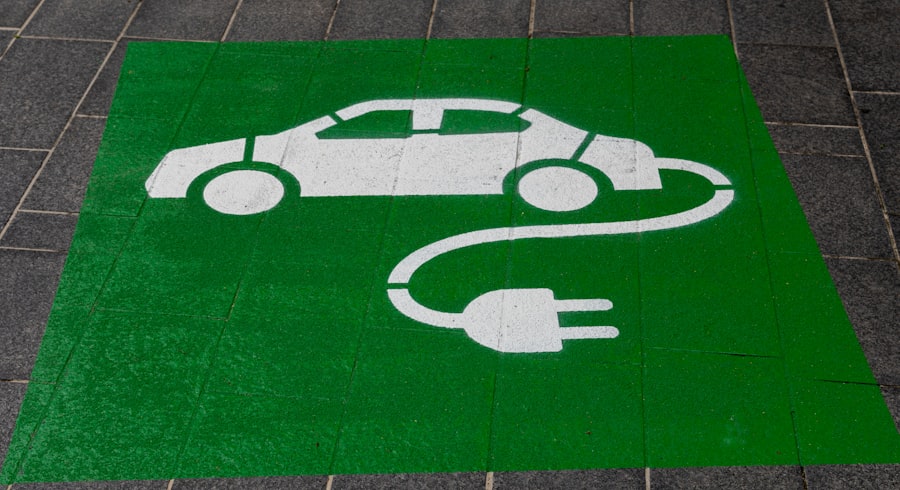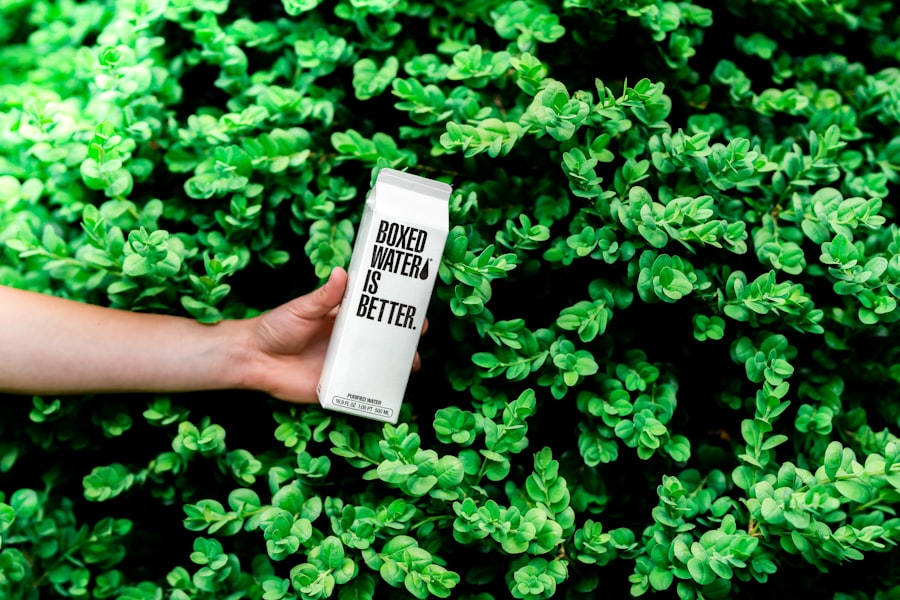Sustainable packaging has emerged as a critical component in the broader conversation about environmental responsibility and resource conservation. As consumers become increasingly aware of the ecological footprint of their purchases, companies are feeling the pressure to adopt practices that minimize waste and reduce environmental impact. Sustainable packaging refers to the use of materials and processes that are environmentally friendly, aiming to create a closed-loop system where resources are reused and recycled rather than discarded.
This shift is not merely a trend; it represents a fundamental change in how products are packaged, distributed, and consumed. The rise of e-commerce and the subsequent increase in packaging waste have further amplified the need for sustainable solutions, prompting businesses to rethink their packaging strategies. The importance of sustainable packaging extends beyond mere aesthetics or consumer preference; it is a vital aspect of corporate responsibility.
Companies that prioritize sustainable practices often find themselves at a competitive advantage, as consumers are more likely to support brands that align with their values. This growing demand for eco-friendly options has led to innovative approaches in packaging design, material selection, and production processes. As we delve deeper into the various aspects of sustainable packaging, it becomes evident that this movement is not just about reducing waste; it encompasses a holistic approach to product lifecycle management, from sourcing raw materials to end-of-life disposal.
Key Takeaways
- Sustainable packaging aims to reduce the environmental impact of product packaging throughout its lifecycle.
- Eco-friendly materials and design focus on using renewable, recyclable, and biodegradable materials to create packaging.
- Biodegradable and compostable packaging options offer a solution for reducing waste and minimizing environmental impact.
- Minimalist and space-saving packaging designs help reduce material usage and transportation emissions.
- Reusable and recyclable packaging options promote a circular economy and reduce the amount of waste sent to landfills.
Eco-Friendly Materials and Design
Choosing the Right Materials
The foundation of sustainable packaging lies in the choice of materials used in its creation. Eco-friendly materials are those that have a lower environmental impact throughout their lifecycle, from production to disposal. Common examples include recycled paper, biodegradable plastics, and plant-based materials such as cornstarch or sugarcane.
Designing for Sustainability
These materials not only reduce reliance on fossil fuels but also minimize greenhouse gas emissions associated with traditional packaging options. Furthermore, the design of eco-friendly packaging plays a crucial role in its sustainability. Thoughtful design can enhance functionality while reducing material usage, leading to lighter and more efficient packaging solutions.
Considering the Supply Chain
Incorporating eco-friendly materials into packaging design also involves considering the entire supply chain. For instance, sourcing materials locally can significantly reduce transportation emissions, while using renewable resources can help mitigate the depletion of finite resources. Additionally, innovative design techniques such as modular packaging can optimize space during shipping and storage, further decreasing the carbon footprint associated with logistics.
A Sustainable Future for Packaging
By prioritizing eco-friendly materials and design principles, companies can create packaging solutions that not only meet consumer demands but also contribute positively to the environment.
Biodegradable and Compostable Packaging

Biodegradable and compostable packaging has gained significant attention as viable alternatives to traditional plastic packaging. Biodegradable materials break down naturally over time through the action of microorganisms, while compostable materials are designed to decompose in specific conditions, returning nutrients to the soil. These types of packaging offer a promising solution to the growing problem of plastic pollution, as they can significantly reduce the amount of waste that ends up in landfills and oceans.
However, it is essential to understand the distinctions between these two categories; not all biodegradable materials are compostable, and vice versa. The effectiveness of biodegradable and compostable packaging largely depends on proper disposal methods. For instance, compostable packaging requires industrial composting facilities to break down effectively, which may not be available in all areas.
This highlights the importance of consumer education regarding disposal practices and the need for infrastructure that supports composting initiatives. As more companies adopt biodegradable and compostable options, it is crucial to ensure that these materials are accompanied by clear labeling and guidelines for consumers. By fostering a better understanding of these alternatives, we can encourage responsible consumption and contribute to a more sustainable future.
Minimalist and Space-Saving Packaging
Minimalist and space-saving packaging is an innovative approach that emphasizes simplicity and efficiency in design. This type of packaging reduces excess material usage while maintaining product protection and functionality. By eliminating unnecessary layers or components, minimalist packaging not only lowers production costs but also minimizes waste generated during manufacturing and distribution.
The trend towards minimalism reflects a broader cultural shift towards simplicity and sustainability, as consumers increasingly seek products that align with their values. Space-saving packaging also plays a crucial role in optimizing logistics and transportation. By designing packages that maximize space utilization, companies can reduce shipping costs and lower their carbon footprint associated with transportation.
This approach is particularly beneficial for e-commerce businesses, where efficient packing can lead to significant savings in both time and resources. Furthermore, minimalist designs often resonate with consumers who appreciate aesthetic simplicity, making them more likely to choose brands that prioritize thoughtful packaging solutions. As we continue to explore sustainable practices, minimalist and space-saving packaging will undoubtedly remain at the forefront of innovation.
Reusable and Recyclable Packaging
Reusable and recyclable packaging represents another essential facet of sustainable practices in the industry. Reusable packaging is designed for multiple uses, allowing consumers to return or refill containers rather than discarding them after a single use. This approach not only reduces waste but also encourages a circular economy where products are kept in use for as long as possible.
Companies that implement reusable packaging systems often find that they can foster customer loyalty by providing incentives for returns or refills, creating a win-win situation for both businesses and consumers. Recyclable packaging complements the reusable model by ensuring that materials can be processed and repurposed at the end of their lifecycle. The effectiveness of recycling programs depends on consumer participation and proper sorting practices; therefore, clear labeling and education are vital components of successful recycling initiatives.
Many companies are now investing in research to develop more recyclable materials and improve recycling technologies, further enhancing the sustainability of their packaging solutions. By prioritizing both reusable and recyclable options, businesses can significantly reduce their environmental impact while meeting consumer demand for responsible products.
Innovations in Packaging Production

Customized Designs without Excess Waste
The landscape of sustainable packaging is continually evolving due to advancements in technology and innovative production methods. One notable trend is the use of digital printing techniques that allow for customized designs without generating excess waste. Traditional printing methods often require large runs to be cost-effective, leading to overproduction and increased waste.
Smart Packaging Technologies for Enhanced Sustainability
In contrast, digital printing enables companies to produce smaller batches tailored to specific market demands, reducing both material waste and inventory costs. Another exciting innovation is the development of smart packaging technologies that enhance product safety and sustainability. For example, some companies are exploring the use of sensors embedded within packaging that can monitor freshness or detect spoilage, thereby reducing food waste.
Biodegradable Composites for a Greener Future
Additionally, advancements in material science have led to the creation of new biodegradable composites that offer improved performance while remaining environmentally friendly. These innovations not only contribute to more sustainable practices but also provide opportunities for brands to differentiate themselves in a competitive market.
The Impact of Sustainable Packaging on the Environment
The transition towards sustainable packaging has far-reaching implications for environmental conservation efforts. By reducing reliance on single-use plastics and promoting eco-friendly alternatives, companies can significantly decrease their overall carbon footprint. Sustainable packaging practices contribute to lower greenhouse gas emissions during production processes and transportation while minimizing waste generation at landfills.
Moreover, by utilizing renewable resources and promoting recycling initiatives, businesses can help preserve natural ecosystems and reduce the depletion of finite resources. The positive impact of sustainable packaging extends beyond individual companies; it fosters a collective movement towards environmental stewardship within industries as a whole. As more organizations adopt sustainable practices, they set an example for others to follow, creating a ripple effect throughout supply chains and consumer behavior.
This shift not only benefits the environment but also enhances brand reputation and consumer trust. Ultimately, sustainable packaging represents a crucial step towards achieving broader sustainability goals while addressing pressing environmental challenges.
Future Trends in Sustainable Packaging for Tech Products
As technology continues to advance at an unprecedented pace, so too does the need for sustainable packaging solutions tailored specifically for tech products. The electronics industry faces unique challenges regarding packaging due to the fragility of devices and the need for protective materials during shipping. However, there is a growing recognition that sustainable practices can be integrated into this sector without compromising product safety or performance.
Future trends may include the development of protective packaging made from biodegradable materials or innovative designs that minimize material usage while ensuring adequate protection. Additionally, as consumers become more environmentally conscious, tech companies are likely to face increasing pressure to adopt sustainable practices throughout their supply chains. This may involve collaborating with suppliers who prioritize eco-friendly materials or investing in research to develop new technologies that enhance recyclability or reusability.
Furthermore, as regulations surrounding electronic waste become more stringent globally, companies will need to proactively address these challenges by implementing sustainable packaging solutions that align with regulatory requirements while meeting consumer expectations for responsible products. In conclusion, sustainable packaging represents a multifaceted approach to addressing environmental challenges while meeting consumer demands for responsible products. From eco-friendly materials and minimalist designs to innovations in production processes, the industry is witnessing a transformative shift towards sustainability that benefits both businesses and the planet alike.
As we look ahead, it is clear that sustainable packaging will play an increasingly vital role in shaping the future of commerce across various sectors, including technology.
In the context of sustainable packaging innovations in tech products, it’s also essential to consider how consumers select these products based on their features and environmental impact. A related article that discusses the criteria for choosing technology wisely, specifically focusing on tablets for students, can be found at How to Choose a Tablet for Students. This article provides insights into selecting devices that are not only efficient but also potentially consider the sustainability of their packaging and production processes, which is crucial for environmentally conscious decisions in tech acquisitions.
FAQs
What are sustainable packaging innovations in tech products?
Sustainable packaging innovations in tech products refer to the use of environmentally friendly materials and design techniques to reduce the environmental impact of packaging for electronic devices and gadgets.
Why are sustainable packaging innovations important for tech products?
Sustainable packaging innovations are important for tech products because they help reduce the amount of waste generated from packaging, minimize the use of non-renewable resources, and lower the carbon footprint of the product.
What are some examples of sustainable packaging innovations in tech products?
Examples of sustainable packaging innovations in tech products include using biodegradable or compostable materials, reducing the overall packaging size and weight, incorporating recycled materials, and designing packaging that can be easily reused or repurposed.
How do sustainable packaging innovations benefit the environment?
Sustainable packaging innovations benefit the environment by reducing the amount of plastic and other non-biodegradable materials that end up in landfills, conserving natural resources, and lowering greenhouse gas emissions associated with the production and disposal of packaging materials.
Are there any challenges associated with implementing sustainable packaging innovations in tech products?
Challenges associated with implementing sustainable packaging innovations in tech products include finding cost-effective alternatives to traditional packaging materials, ensuring the protection and safety of the product during transportation and storage, and educating consumers about the importance of sustainable packaging.

